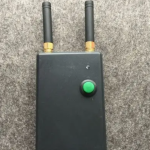When it comes to owning rental properties, financial organization is key. A profit and loss statement (P&L) is a critical tool for landlords who want to track the financial performance of their rental properties. This statement provides a clear overview of both income and expenses, offering invaluable insights to help landlords make data-driven decisions. Whether you own a single property or manage a portfolio, knowing how a profit and loss statement for rental property works makes rental property management more efficient and transparent.
If you’re a property owner, here’s why creating a profit and loss statement is not just helpful but essential.
Tracks All Sources of Income
A rental property’s primary source of income is obvious—rent. However, many property owners overlook smaller income streams like late fees, pet fees, or parking charges. A profit and loss statement consolidates all these income sources into one place. This clarity ensures that nothing is missed, giving you a true snapshot of how much revenue your property is generating.
By tracking income regularly, landlords can also identify trends, such as months when rental income tends to fluctuate. This can help in budgeting for unexpected expenses or planning periodic maintenance.
Keeps Your Expenses in Check
One of the biggest benefits of a profit and loss statement is that it highlights all of your expenses alongside your income. Maintenance costs, property taxes, insurance premiums, utility bills, and even marketing expenses for finding new tenants can all be recorded in a single report.
This seamless way of consolidating expenses makes it easier to see exactly where your money is going. More importantly, it can help identify areas where unnecessary spending can be reduced. If expenses consistently outweigh income, a P&L statement will bring this to your attention, allowing you to take corrective action quickly.
Simplifies Tax Preparation
For rental property owners, tax preparation is often a daunting task. A profit and loss statement simplifies it immensely by keeping all financial data organized and in one place. This report is especially useful when calculating deductible expenses, such as property improvements or interest on loans used to purchase the property.
Having a P&L statement also makes it easier to comply with tax regulations. Come tax season, the detailed breakdown ensures you are well-prepared to file accurately while potentially optimizing your deductions.
Offers Insights into Profitability
At its core, every rental property is an investment. A profit and loss statement helps you measure the profitability of that investment over time. Is the property earning you a healthy return? Are there periods when its profitability takes a dip? The P&L provides these answers by giving you a net income figure after expenses are deducted from your total income.
This invaluable insight reveals the overall health of your rental property business. If multiple properties are involved, comparing individual P&L statements enables landlords to determine which properties are their most lucrative and which may require adjustments.
Aids in Decision Making
Ultimately, a profit and loss statement is a decision-making tool. It allows rental property owners to assess their financial performance accurately and decide how to move forward. Should you raise rents to offset rising expenses? Could it be the right time to invest in another property? Are particular expenditures holding you back from maximizing profits?
When landlords use a P&L statement consistently, they set themselves up for success by ensuring their decisions are informed and data-backed. This precision eliminates guesswork and reduces financial risks in the long term.





